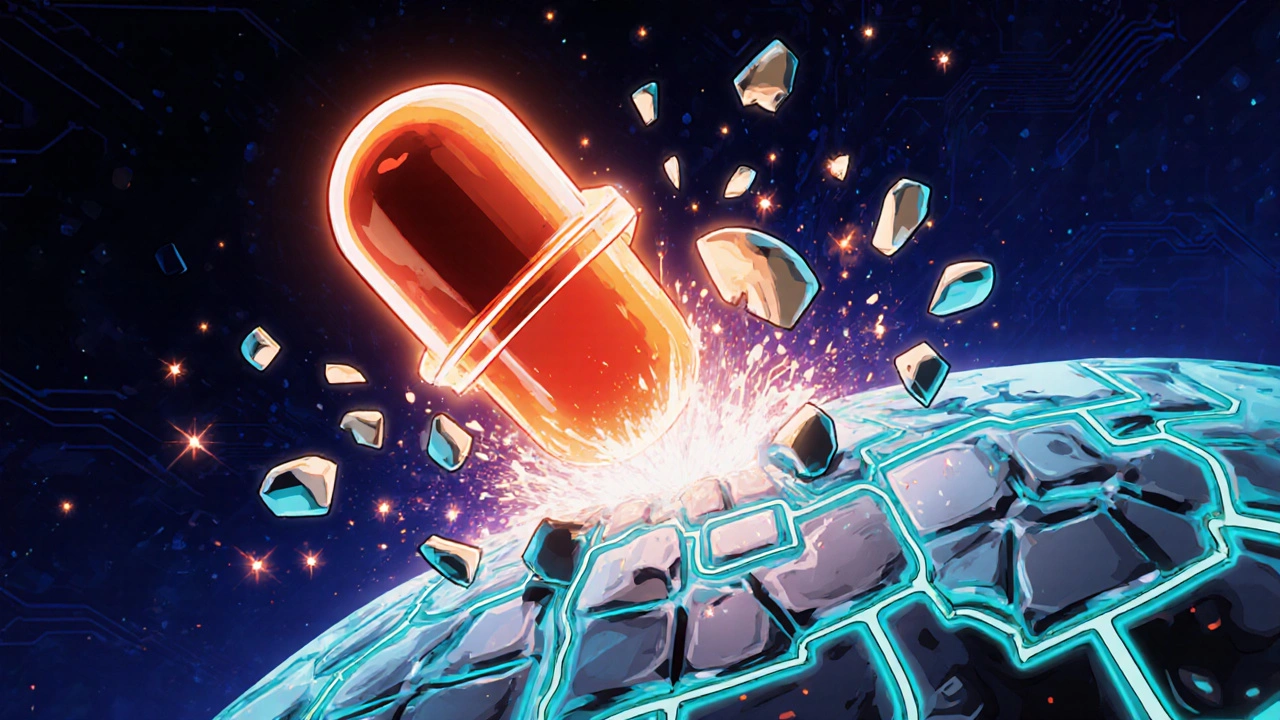
Cefaclor Dosage Calculator
Renal Function Assessment
Enter creatinine clearance (mL/min) to calculate appropriate cefaclor dosage for UTI treatment.
Key Takeaways
- Cefaclor is a second‑generation cephalosporin often used for uncomplicated urinary tract infections caused by susceptible bacteria.
- It works by disrupting bacterial cell‑wall formation, leading to rapid bacterial death.
- Typical adult dosing is 250-500mg every 6hours for 3-7days, adjusted for kidney function.
- Common side effects include gastrointestinal upset and mild rash; serious reactions are rare but can involve allergic responses.
- Resistance patterns vary by region; clinicians compare cefaclor with nitrofurantoin, trimethoprim‑sulfamethoxazole, and ciprofloxacin before prescribing.
Understanding Urinary Tract Infections
Urinary Tract Infection is an infection that can affect any part of the urinary system, most commonly the bladder (cystitis) and urethra. In adults, the condition accounts for millions of doctor visits each year, especially among women due to a shorter urethra. The typical culprit is Escherichia coli (a gram‑negative bacterium that resides in the gut and can ascend the urinary tract), though other species like Klebsiella pneumoniae (another gram‑negative organism implicated in complicated cases) also play a role.
Symptoms usually appear within 24‑48hours and include burning during urination, increased frequency, urgency, and lower abdominal discomfort. If left untreated, the infection can spread to the kidneys, leading to pyelonephritis, which may cause fever, flank pain, and systemic illness.
How Cefaclor Works
Cefaclor is a second‑generation oral cephalosporin antibiotic that interferes with bacterial cell‑wall synthesis by binding to penicillin‑binding proteins. This action weakens the peptidoglycan layer, causing the bacteria to burst under osmotic pressure. Its spectrum covers many gram‑positive cocci and some gram‑negative rods, making it a reasonable option for uncomplicated UTIs when the pathogen is known to be susceptible.
Pharmacokinetically, cefaclor is well absorbed from the gastrointestinal tract, reaching peak plasma concentrations in about 1-2hours. About 50% is excreted unchanged in the urine, providing therapeutic levels in the urinary tract. The drug’s half‑life is roughly 1hour in individuals with normal renal function, but it can extend up to 3hours in patients with impaired kidneys, necessitating dose adjustments.
For the purpose of this article, the keyword Cefaclor will be highlighted once to reinforce its central role.

When Clinicians Choose Cefaclor for UTI
Doctors consider several factors before selecting cefaclor:
- Pathogen susceptibility: Local antibiograms must show low resistance rates of E. coli to cefaclor. In many regions, resistance can exceed 20%, making alternative agents preferable.
- Patient allergies: Patients with a documented penicillin or cephalosporin allergy may experience cross‑reactivity, limiting cefaclor use.
- Renal function: Since cefaclor is partially cleared by the kidneys, dose reductions are required for patients with a creatinine clearance below 30mL/min.
- Pregnancy status: Cefaclor falls under Category B (no evidence of risk in animal studies); however, clinicians often opt for nitrofurantoin in the first trimester to avoid any theoretical risk.
When these criteria align, cefaclor offers the convenience of oral dosing, a favorable safety profile, and a relatively low cost compared with newer fluoroquinolones.
Comparing Cefaclor with Other Common UTI Antibiotics
| Antibiotic | Class | Typical Adult Dose | Key Spectrum | Resistance Concerns |
|---|---|---|---|---|
| Cefaclor | Second‑generation cephalosporin | 250-500mg q6h for 3-7days | Gram‑positive cocci, some gram‑negative rods (E. coli) | Increasing E. coli resistance in many locales |
| Nitrofurantoin | Nitrofuran derivative | 100mg q6h for 5-7days | Predominantly urinary‑tract E. coli, Enterococcus | Low resistance; ineffective for pyelonephritis |
| Trimethoprim‑sulfamethoxazole | Combined sulfonamide | 800/160mg q12h for 3days | Broad gram‑negative and gram‑positive | High resistance in many regions, especially E. coli |
| Ciprofloxacin | Fluoroquinolone | 250-500mg q12h for 3days | Wide‑range gram‑negative, some gram‑positive | Rising fluoroquinolone resistance; safety warnings |
The table highlights why cefaclor sits in the middle of the spectrum: it’s more potent against certain gram‑positive organisms than nitrofurantoin, yet it faces growing resistance among common UTI pathogens.
Dosage, Duration, and Safety Tips
Standard dosing for uncomplicated adult UTIs is 250mg every 6hours for three days; extending to 500mg q6h for seven days is reserved for more persistent infections. Pediatric dosing follows weight‑based calculations (40mg/kg/day divided into four doses).
Key safety considerations include:
- Gastrointestinal upset: Nausea and diarrhea occur in up to 10% of patients. Taking the medication with food can lessen discomfort.
- Allergic reactions: Rash, urticaria, and, rarely, anaphylaxis may develop. Immediate discontinuation and medical evaluation are essential.
- Clostridioides difficile risk: Broad‑spectrum antibiotics can disrupt gut flora, increasing the risk of C.difficile colitis. Use the shortest effective course.
- Renal dosing adjustments: For creatinine clearance 15-30mL/min, reduce dose to 250mg q12h; avoid use if clearance <15mL/min unless benefits outweigh risks.
Patients should complete the full prescribed course, even if symptoms improve, to ensure eradication and reduce resistance development.

Special Populations and Considerations
Antibiotic resistance is the ability of bacteria to survive and multiply despite exposure to antibiotics that once inhibited them. In the context of UTIs, resistance trends drive the choice of therapy. Elderly patients, those with recurrent infections, or individuals with recent hospitalizations often harbor resistant strains, making cefaclor less reliable.
For pregnant women, nitrofurantoin (except near term) and beta‑lactams like amoxicillin‑clavulanate are generally preferred. However, when a patient has an allergy to both penicillins and nitrofurantoin, cefaclor can be considered after confirming susceptibility.
Patients with chronic kidney disease must have dosing individualized based on the latest eGFR calculations. Over‑dosing can lead to accumulation and heightened side‑effect risk, while under‑dosing may foster resistance.
Monitoring and Follow‑Up
After completing therapy, a follow‑up urine culture is advisable for patients with:
- Persistent symptoms beyond 48hours
- Recurrent UTIs (≥3 in a year)
- Complicated infections such as those involving kidney stones or structural abnormalities
Negative culture confirms eradication; a positive result may indicate resistant organisms, prompting a switch to an alternative antibiotic guided by susceptibility data.
Frequently Asked Questions
Can cefaclor be used for kidney infections?
Cefaclor reaches therapeutic levels in the urine, but for pyelonephritis (kidney infection) clinicians often favor agents with higher tissue penetration like fluoroquinolones or aminoglycosides. Cefaclor may be used when susceptibility is proven and the infection is uncomplicated.
What should I do if I develop a rash while taking cefaclor?
Stop the medication immediately and contact your healthcare provider. A rash can be a mild allergic reaction, but if you notice swelling, trouble breathing, or hives, seek emergency care.
Is it safe for children to take cefaclor for UTIs?
Yes, pediatric dosing is weight‑based and has been shown to be effective for uncomplicated UTIs in children. However, a pediatrician should evaluate the child’s kidney function and allergy history before prescribing.
How does cefaclor compare to nitrofurantoin in terms of side effects?
Both drugs are generally well tolerated. Nitrofurantoin can cause pulmonary toxicity with long‑term use, while cefaclor’s most common issues are stomach upset and mild rash. Short courses of either drug have low serious‑adverse‑event rates.
Will taking cefaclor affect my birth control pills?
Cefaclor does not have known interactions that reduce hormonal contraceptive efficacy, but it’s still wise to use a backup method for at least one menstrual cycle after completing any antibiotic course.
nitish sharma
It is essential to recognise that Cefaclor, when prescribed judiciously, can serve as a valuable instrument in the management of uncomplicated urinary tract infections; clinicians ought to weigh the susceptibility data meticulously and adjust dosing in accordance with renal function, thereby optimising therapeutic outcomes.
Sarah Hanson
cEFaclor works well if the bug is suscepible, but watch for kidney issues.
Nhasala Joshi
Did you ever notice how the pharma giants push Cefaclor like a secret weapon, hidden behind layers of “research” while they keep the real resistance data under lock‑and‑key? 🕵️♀️💊 The more they whisper, the deeper the rabbit hole gets, and we’re left swallowing pills that might be part of a grander scheme! 😈🔬
kendra mukhia
Honestly, if you’re still reaching for Cefaclor without checking the local antibiogram, you’re basically gambling with your health; the data shows rising resistance, and no one wants to be the next headline for a treatment failure.
Barbara Grzegorzewska
One must appreciate the nuanced elegance of cefaclor’s β‑lactam ring – a masterpiece of Western pharmaceutical ingenuity that outshines many of the “so‑called” foreign antibiotics, even if some critics attempt to downplay its superiority.
Nis Hansen
When we contemplate the act of prescribing an antibiotic, we are, in effect, navigating the delicate balance between microbial eradication and the preservation of our own microbiome’s symphony. Cefaclor, as a second‑generation cephalosporin, occupies a liminal space that bridges the potency of first‑generation agents with a broader gram‑negative reach. Its mechanism, the inhibition of penicillin‑binding proteins, reminds us that even the smallest molecular interactions can cascade into life‑saving outcomes. Yet, each dose delivered carries the imprint of our clinical judgment, shaped by regional resistance patterns that are as fluid as the tides. The decision to employ cefaclor must therefore be anchored in an awareness of local antibiograms, lest we inadvertently fuel the silent rise of resistant strains. Moreover, the pharmacokinetics of cefaclor-rapid absorption, modest half‑life, renal excretion-demand a nuanced adjustment in patients with compromised kidney function, reflecting the intimate dialogue between drug and host. In pregnant patients, the Category B classification offers a semblance of safety, but the prudence of alternative agents, such as nitrofurantoin, cannot be dismissed. The gastrointestinal side‑effects, while often mild, serve as a reminder that the human body signals its discontent, urging clinicians to consider the shortest effective course. One must also weigh the rare yet serious risk of Clostridioides difficile colitis, a specter that looms over broad‑spectrum antibiotic use. The cost‑effectiveness of cefaclor, when compared to newer fluoroquinolones, adds an economic dimension to the therapeutic equation. Ethical stewardship obliges us to reserve potent antibiotics for cases where they are truly indicated, preserving their efficacy for future generations. The evolving landscape of antimicrobial resistance underscores the necessity of continued research and surveillance. Ultimately, the art of medicine lies in harmonising scientific evidence with compassionate patient care, and cefaclor, when wielded judiciously, can be a harmonious note in that composition. As we prescribe, we also educate patients about adherence, potential side‑effects, and the importance of completing the regimen. In doing so, we close the loop between prescriber, patient, and the microscopic world they aim to protect. Thus, a thoughtful prescription of cefaclor becomes a testament to responsible antimicrobial practice.
Fabian Märkl
Great breakdown! I appreciate the depth you provided-especially the reminder about renal dosing adjustments; it’s something many overlook 😊
Avril Harrison
Interesting take, I hadn’t considered how much the local resistance rates can sway the choice between cefaclor and nitrofurantoin.
Natala Storczyk
!!Absolutely!! The regional antibiograms are the hidden puppeteers !! They pull the strings behind every prescription !! Ignoring them is like walking blindfolded into a storm !!
Rohit Sridhar
For anyone hesitant about starting cefaclor, remember that adherence to the prescribed schedule dramatically boosts success rates; taking the doses with food can also soothe the occasional stomach upset, making the whole course more tolerable.
Bethany Torkelson
Don't wait until symptoms worsen-start the full course as directed.
Grace Hada
Cephalosporins are fine until resistance spikes, then they're worthless.
alex montana
...Really?; the data shows >30% resistance in many areas..; Yet, some clinicians still push cephalosporins without question!!
Wyatt Schwindt
Check kidney function before dosing.
Lyle Mills
Renal clearance determines AUC; adjust mg accordingly.





Write a comment